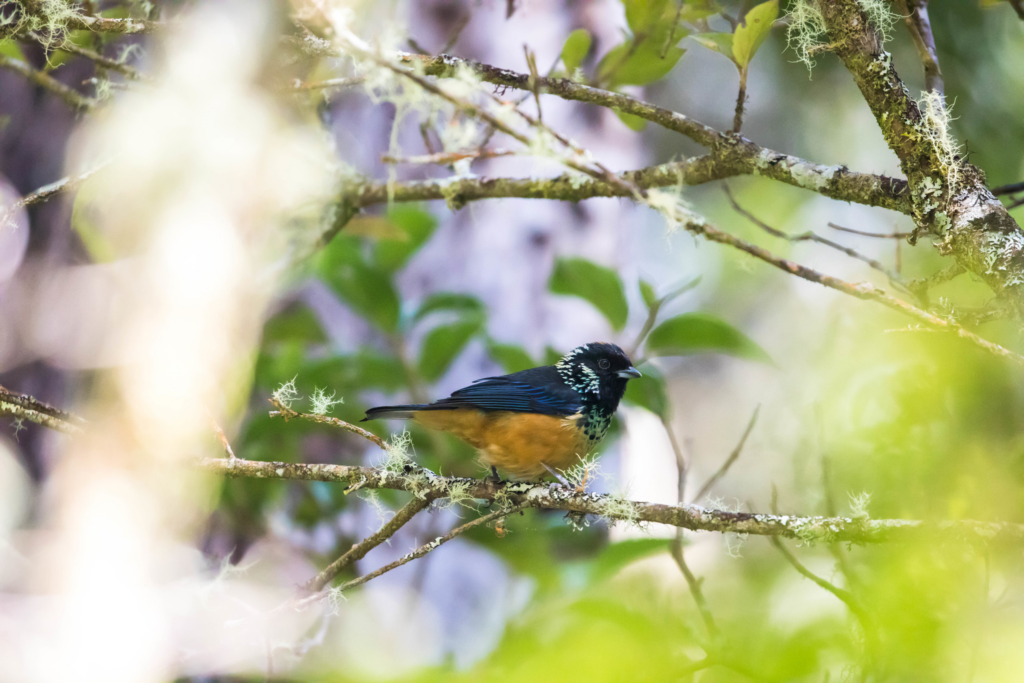Introducing the Spangle-cheeked tanager: an extraordinary bird whose distinguishing features, including its vibrant orange belly, cobalt wings, and turquoise spangles, make it truly one-of-a-kind.
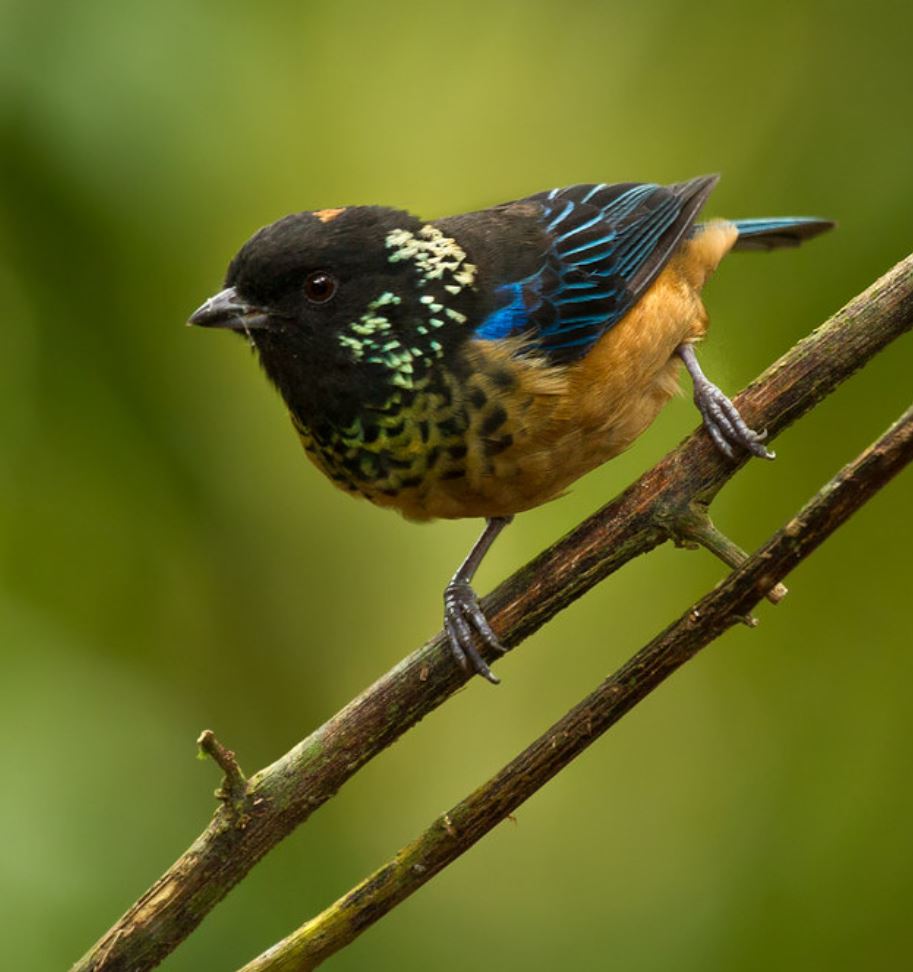
Introducing the spangle-checked tanager, a delightful little bird whose measurements typically reach about 13 cm (5.1 inches) in length and weighs approximately 20 g (0.71 ounces). Sporting an elegant appearance, its head boasts a charming black tone, while the breast and upper region mirror this color. Scales of blue gracefully adorn the breast, sides of the face, and neck, creating a captivating contrast to the rufous crown atop its head. To add to its allure, the wings and tail are accentuated with a delicate blue hue, while the rump displays a vibrant shade of green. Lastly, the cinnamon-colored belly completes the stunning ensemble of this lovely tanager.
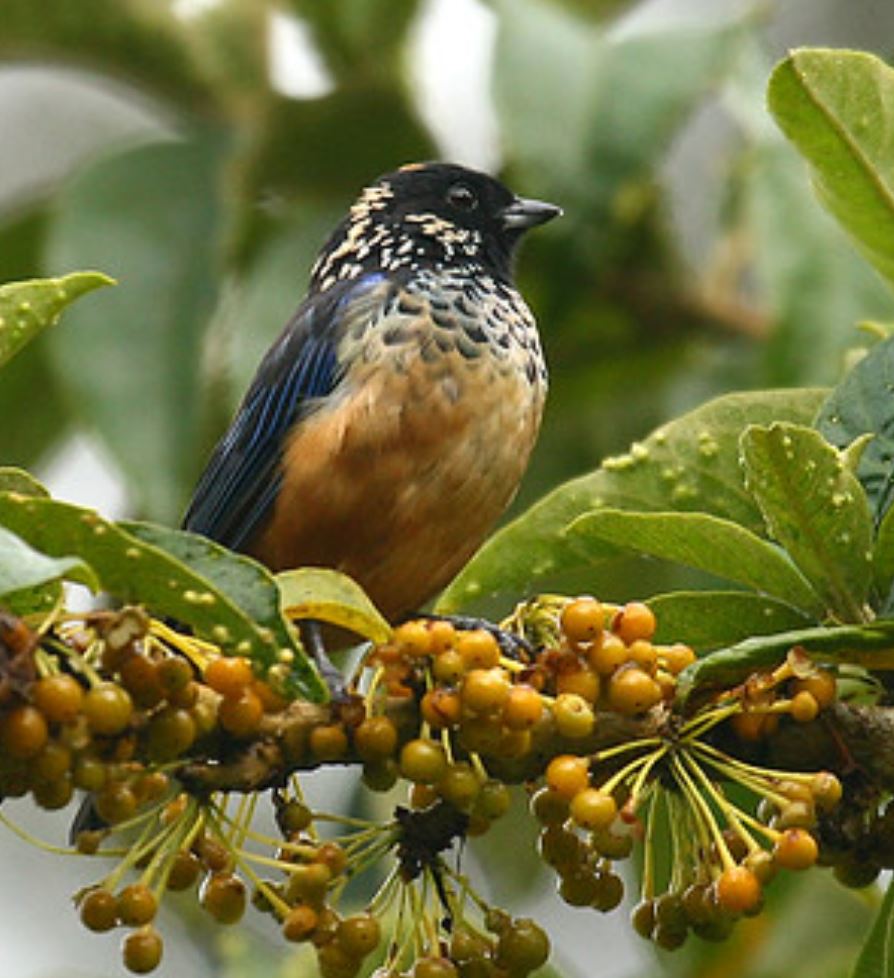
Males and females of this bird species share a strikingly similar appearance, though males do exhibit more pronounced blue scaling patterns. When it comes to younger birds, they tend to resemble the male birds to a lesser extent, lacking a distinct crown patch and displaying less noticeable scaling.
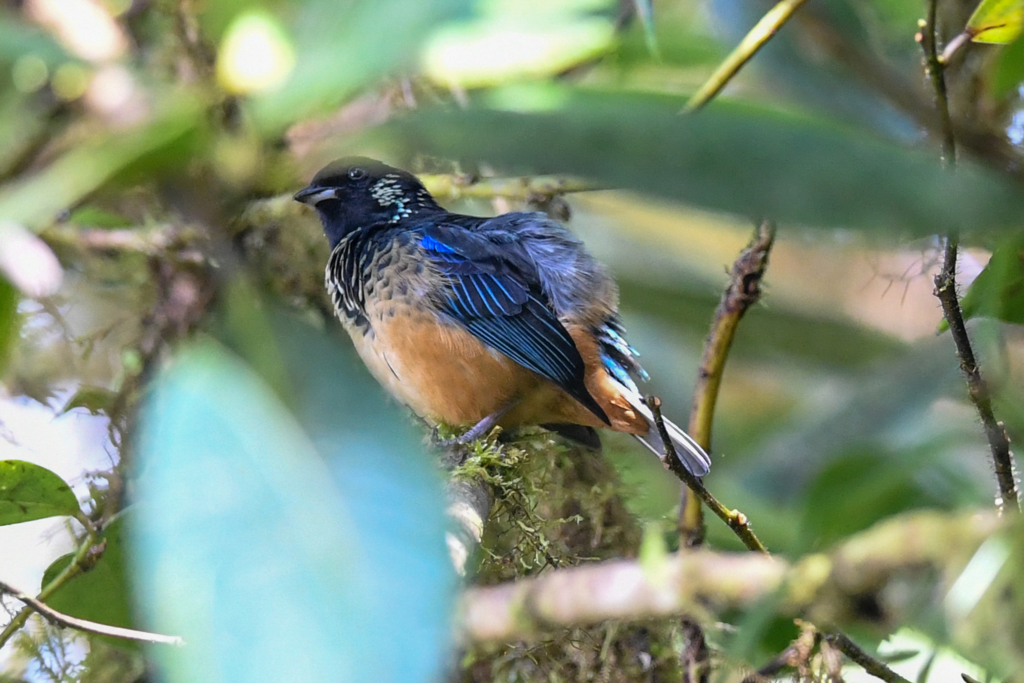
You can easily spot and find this bird exclusively in Costa Rica and the western region of Panama.
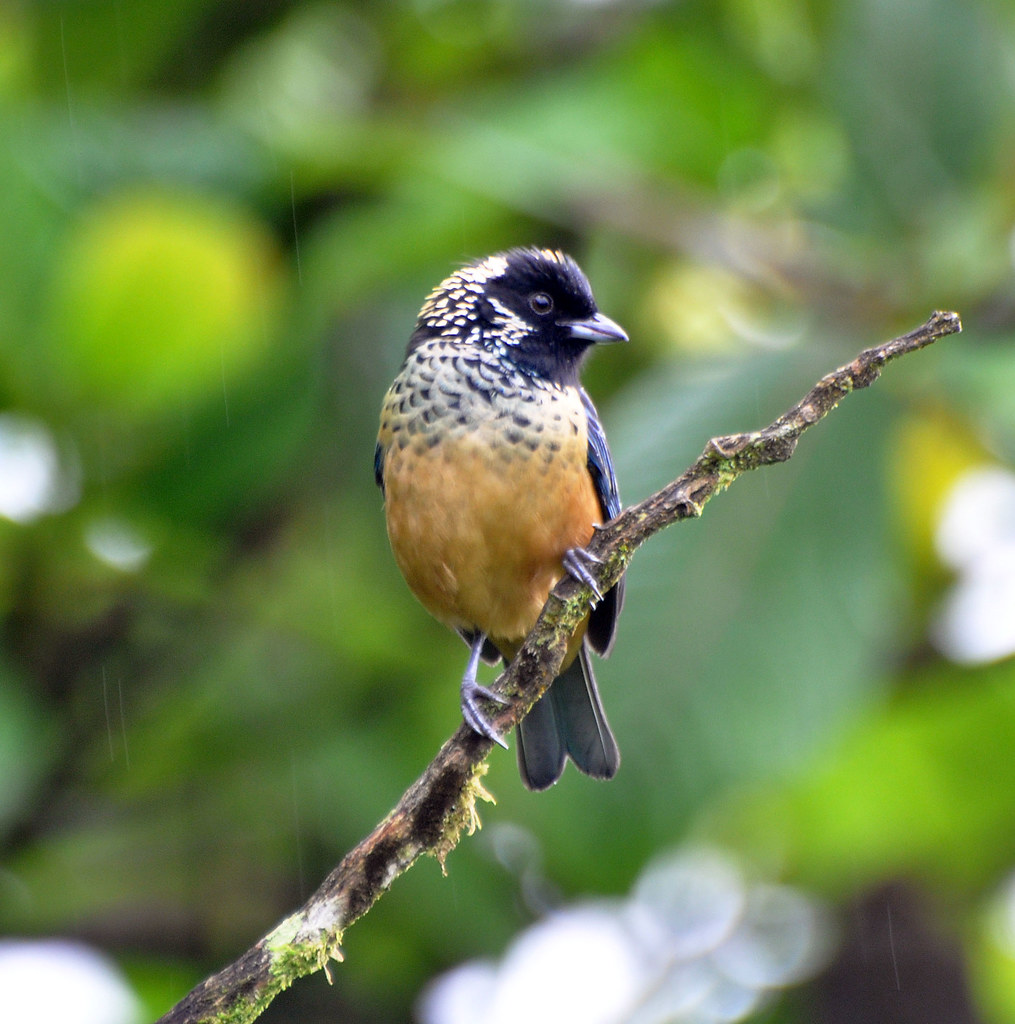
These avian creatures prefer the uppermost regions of the forest, specifically the canopy, which spans from approximately 1,200 to 3,000 meters above sea level, or 3,900 to 9,800 feet. They demonstrate a particular fondness for forests abundant with epiphytes. However, they are versatile enough to inhabit lower altitudes as well, such as semi-open regions, forest edges, and areas of secondary growth.
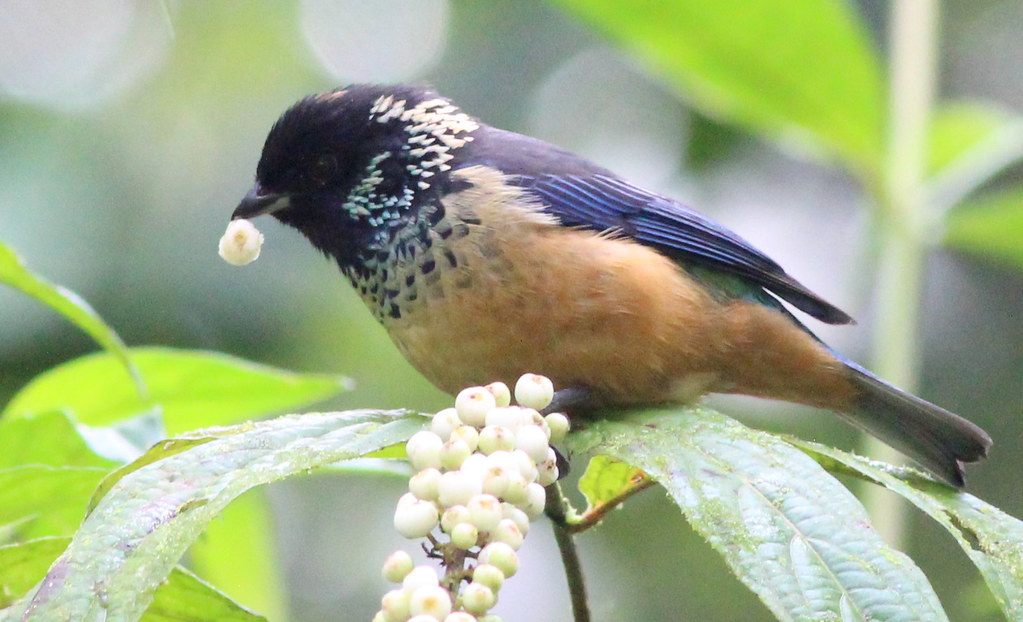
The spangle-cheeked tanager delights in feasting on a variety of fruits, although it does not shy away from indulging in insects and spiders as well. Its preferred method of consumption is to swallow these delectable morsels whole.
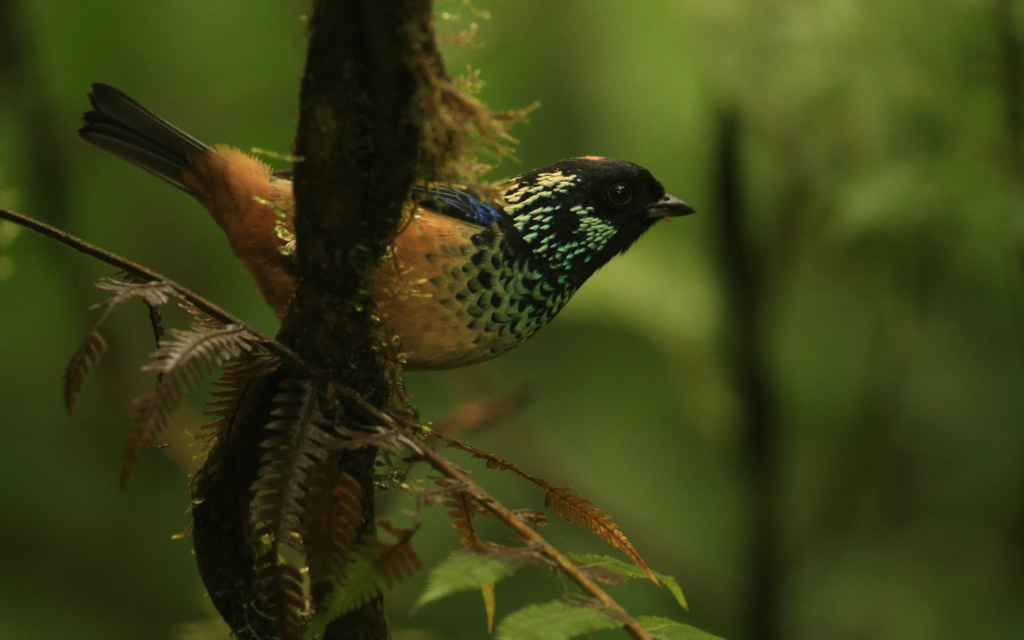
During their breeding period, these avian species construct nests resembling cups. Typically, they select tree forks or branches adorned with epiphytes as their preferred locations. To ensure utmost comfort, the interior of the nest is delicately lined with bromeliad leaves before two eggs are carefully positioned inside.
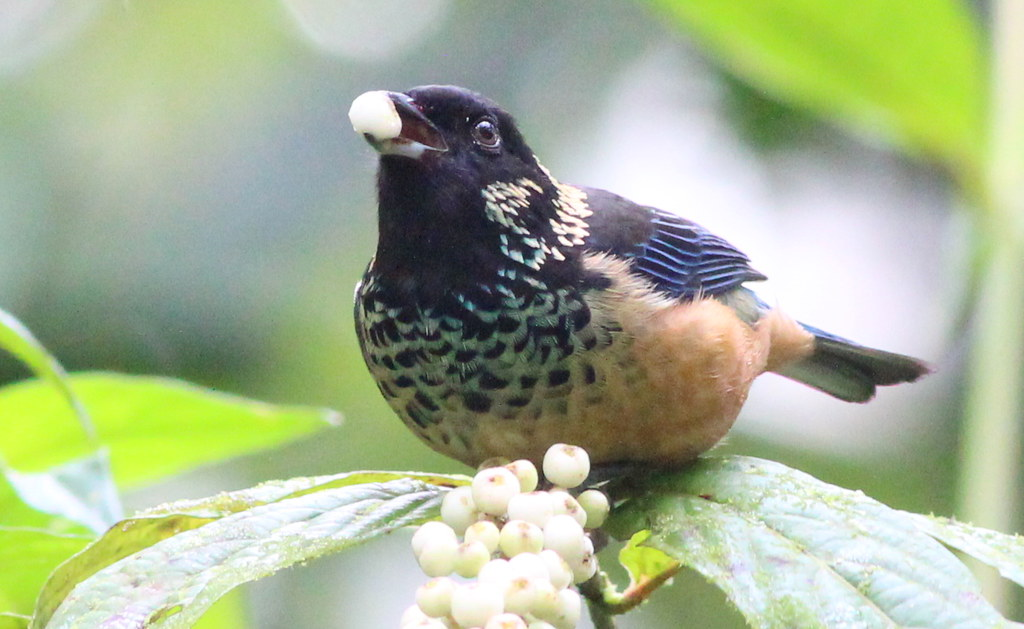
The IUCN Red List classifies this avian species as having little reason for concern.
